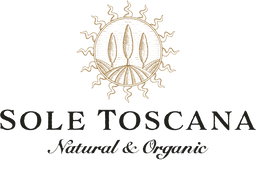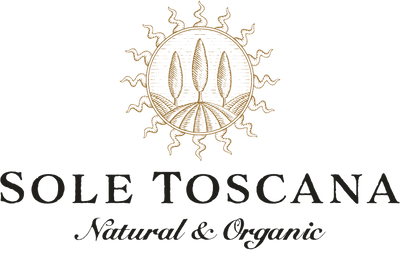Did you know that under current laws, the FDA doesn't obligate cosmetics companies to conduct safety assessments on their products? This loophole allows brands to sneak in harmful ingredients and mask them using deceptive titles like "fragrance." Some elements might be listed clearly on the labels, but with no warning messages to inform consumers of their potentially harmful effects.
Toxic chemicals in makeup
If you love makeup and wear it daily, this might sound like a death knell to your beauty routine. However, it's vital to think about what you're putting on your skin, considering it absorbs up to 60% of the products you apply.
Let's learn more about some toxic chemicals in makeup and healthy alternatives.
1. Phthalates
These are a group of chemicals that disrupt our endocrine (hormone) system. Such interference causes neurological, reproductive, and developmental damage.
A study by the University of Maryland found that exposure to phthalates could cause decreased fertility, production of testosterone, and reproductive abnormalities in males. In women, phthalates cause premature delivery and endometriosis.
WHERE WOULD YOU FIND PHTHALATES?
Phthalates make products more flexible or better able to retain color and scent. These chemicals are often grouped under and listed as "fragrance." It's best if you avoid products that contain "fragrance" and pick those that use plant essences and oils to give them pleasant scents.
2. Lead
Lead is a proven neurotoxin (damages the nerves) that contributes to reduced fertility, miscarriage, and delays in the onset of puberty for females. A recent study by the FDA tested popular lipstick brands and found 400 that contained up to 7.19ppm (dangerous levels) of lead.
HOW DOES LEAD MAKE IT INTO COSMETICS?
Companies don't add lead as an ingredient, but it occurs in products through contamination by color additives.
The surest way to avoid lead is to purchase makeup from companies that make their products in small batches or buy products that use fruit and other natural pigments for color.
3. Quaternium-15 and other formaldehyde-releasing preservatives
When some chemicals oxidize, they release harmful formaldehyde gas, a known human carcinogen.
The main risk is exposure through inhalation. The European Union (E.U.) mandates that companies label formaldehyde-releasing preservatives in cosmetics if they exceed .05%.
LOOK FOR:
- BHUT (butylated hydroxytoluene)
- Bronopol
- Diazolidinyl urea
- DMDM hydantoin
- Imidazolidinyl urea
- Methenamine
- Quarternium-15, Quaternium-18, Quaternium-26
- Sodium hydrozymethylglycinate
Quaternium-15 is one of the common forms used in pressed powders, mascara, and eyeliners. Apart from potentially causing cancer, this ingredient can cause skin sensitivity and irritation. It's in a class of compounds called quaternary ammonium compounds (quats). Quats are used as surfactants, germicides, preservatives, and conditioning agents.
Pick products that use natural alternatives such as honey, grapefruit seed extract, rosemary, tea tree oil, and vitamin E.
4. PEG compounds
Polyethylene glycols are petroleum-based compounds that soften, thicken, and gelatinize cosmetics. They're a common ingredient in cream-based products. Unfortunately, PEGs are contaminated with 1,4-dioxane and ethylene oxide.
1,4-dioxane is a possible human carcinogen that can linger in the environment for long without degrading. Ethylene oxide is a known human carcinogen that's harmful to the nervous system and human development in general.
5. Butylated compounds (BHT, BHA)
BHA and BHT are preservative ingredients in many products. You'll find them in:
- lipsticks, lip glosses,
- blushes, foundations
- eyeliners, eye shadows
- perfumes
- moisturizers
- skin cleansers
These chemicals disrupt hormones, may induce skin allergies and contribute to developmental, organ, and reproductive toxicity.
Evidence suggests that BHT mimics estrogen, thus throwing off hormonal function in both men and women. In some situations, it can promote the growth of tumors.
Avoid these ingredients and go for products with natural preservatives instead, like vitamin E and aspen bark extract.

6. Parabens
Parabens are the most widely used preservatives in cosmetics. The European Commission on Endocrine Disruption classifies them as Category 1 priority substances because they interfere with hormone function in humans.
WHAT HARM CAN PARABENS CAUSE?
Parabens mimic estrogen and contribute to breast cancer. They also interfere with the nervous system, reproduction, and the immune system.
Some companies substitute parabens with phenoxyethanol, but this isn't any better. It has many of the same adverse effects.
Other toxic ingredients to avoid:
7. Octinoxate
This is an unstable chemical linked with hormone disruption and thyroid disorders. It's found in foundations.
8. p-Phenylenediamine
This compound is a type of coal tar dye. It's a respiratory toxicant and may also carry heavy metals. Sometimes it's listed as 'CL' followed by a five-digit number.
9. Carbon black
It's linked to cancer and organ toxicity. Carbon black is a popular ingredient in eyeliners. Other names it goes by include: pigment black 6, pigment black 7, channel black, acetylene black, froflow, arotone, arovel, arrow, black pearls, and atlantic.
10. Siloxanes
These are used in cosmetics to smooth, soften, and moisten. They disrupt hormones and are toxic to the reproductive system. On product labels, look for ingredients that end in -siloxane or -methicone.
The next time you're stocking up on makeup, be mindful of the ingredients. Thankfully, there are various natural, healthy options available, and brands are adding more every year.
With love,
The Sole Toscana Beauty Team


